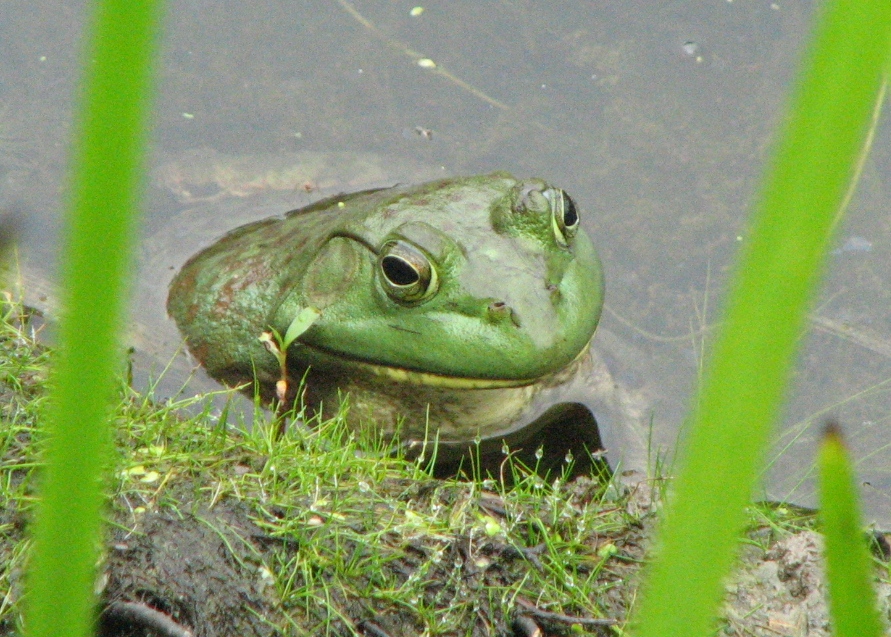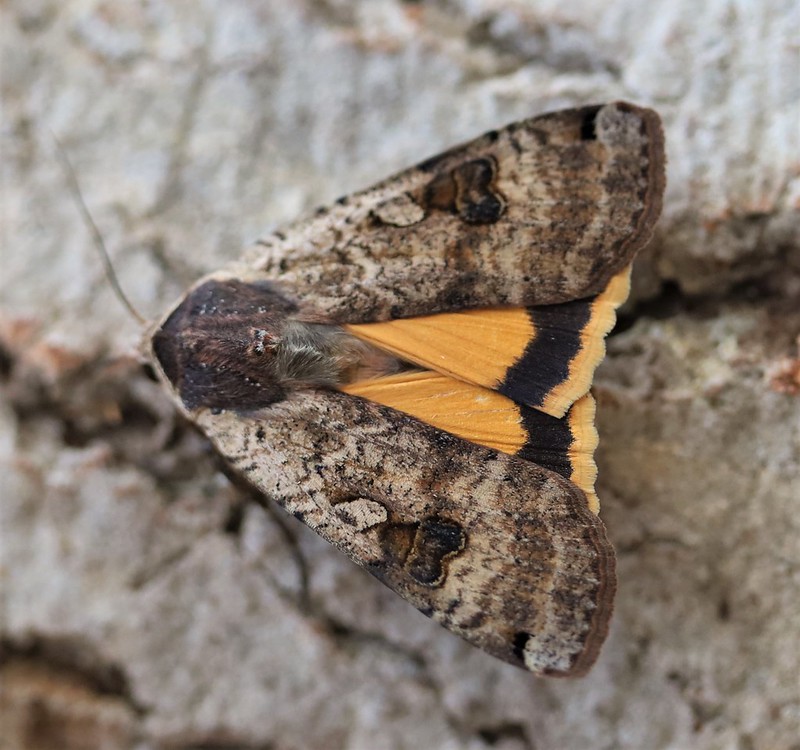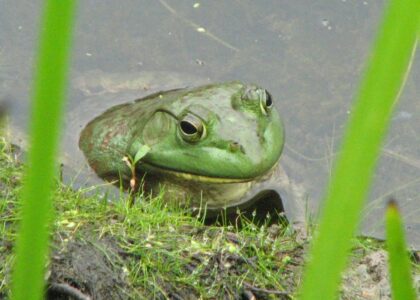In living color before our eyes, in hiding

Frogs and many other amphibians in Western New York camouflage to hide from predators.
- Frogs and many other amphibians in Western New York camouflage to hide from predators.
- Photo by Nick Goodrum Underwing moths have two lines of defense. Their outer wings blend in flawlessly with bark, and their bright orange or red underwings are flashed in a warning when they fly away.
Last but not least is the visual part of nature. While not the only way to experience nature, when sight is available it is often the first sense used to explore and explain what you experience. This visual experience can be described in terms of size or scale, the objects present, how things are moving, and the colors you see.
The colors in nature can indicate any number of things to us, but they often have meanings to the living things that are using those colors to help them hide, warn, or attract other organisms. As we approach the end of August, we also approach the changing of seasons. My quick stop into the craft store would lead one to believe fall is already in full swing, but we still have quite a bit of that late summer transition left before autumn surrounds us in full force.
Color is a way many people describe the passing of seasons, at least in this corner of the country. Fall comes in with reds, oranges, yellows, and browns, until eventually winter comes around and it swings between a white winter wonderland and brownish-white slush. Spring comes in with light greens and eventually bursts of purple crocuses and yellow dandelions. Summer colors continue leading with green, but it is also the season when colors are most varied and abundant thanks to the rotating wildflowers and animal activity.
These colors do more than just make a pretty picture though. Many of them serve a purpose beyond the aesthetics.

Photo by Nick Goodrum Underwing moths have two lines of defense. Their outer wings blend in flawlessly with bark, and their bright orange or red underwings are flashed in a warning when they fly away.
It is thought that the diversity in flower colors evolved to attract specific types of pollinators, a vital situation for flower reproduction. Not all animals perceive colors in the same way though, and so different colors may be more visible, and thus attractive, for certain animals. Color is largely a property of light and energy, and each organism can be tuned into different wavelengths. For example, honeybees can see in the ultraviolet wavelength, letting them see things a little differently than us. Hummingbirds can see ultraviolet wavelengths as well, but between the two pollinators, only hummingbirds can see red due to the presence of an additional opsin protein that bees lack.
A lot of those colors come from two pigment molecules called carotenoids and anthocyanins. Carotenoids are typically responsible for the yellows and oranges of the plant world, while anthocyanins vary in molecular structure to form the red, blues, and purples.
This is true for leaves as well as flowers. Leaves are green throughout the growing season due to chlorophyll, a necessary molecule for photosynthesis, which is the process through which plants make energy to survive and grow. However, as days get shorter and the temperature drops, many plants stop producing chlorophyll as they prepare to wind down for the winter. Once the chlorophyll is out of the way, those carotenoids and anthocyanins get to shine through and provide us with a dazzling show of autumn leaves. Deciduous tree species produce those pigment molecules in varying amounts, which is why maples are a vibrant tie-dye of colors, while some other tree leaves just end up brown.
Plants are not the only organisms using color to communicate or otherwise help themselves survive. An abundance of animals have fur, feathers, skin, and scales in a mix of browns, grays, and blacks allowing them to camouflage. Coyotes and foxes are using their mottled fur colors to blend in with their background as they hunt for prey. Deer and squirrels are brown so they can hide in the tall grasses or trees, making it harder for the predators to see them. Just this morning, I saw a moth whose wings looked so much like bark, that it would have been almost impossible to find if they landed on a tree rather than the building.
Not every animal wants to blend into its surroundings though. Some are looking to stand out, and their bright, bold colors are just as important to their survival. Bright orange Monarch butterflies use this visibility as a warning. They are poisonous to most other vertebrates and predators usually know to stay away from any advertisement that is bold. Other butterflies will use this to their advantage and mimic the orange wings even though they are not poisonous themselves. As long as it works to trick the predators, then it helps them to survive.
Not all plant and animal coloration makes complete sense to us yet. There are animals that are still being studied, and research being done to learn more about the ways animals perceive color. Nature also tends to bend the rules too, so even though we might assume something about an organism based on their coloration, there could be an entirely different explanation for it. No matter the reasoning behind it, I find watching the changing colors of the seasons to be a great way to make observations about the world around me and experience the changes in location, season, and habitat.
Audubon Community Nature Center builds and nurtures connections between people and nature. ACNC is located just east of Route 62 between Warren and Jamestown. The trails are open from dawn to dusk and birds of prey can be viewed anytime the trails are open. The Nature Center is open from 10 a.m. until 4:30 p.m. daily except Sunday when it opens at 1 p.m. More information can be found online at auduboncnc.org or by calling (716) 569-2345.






